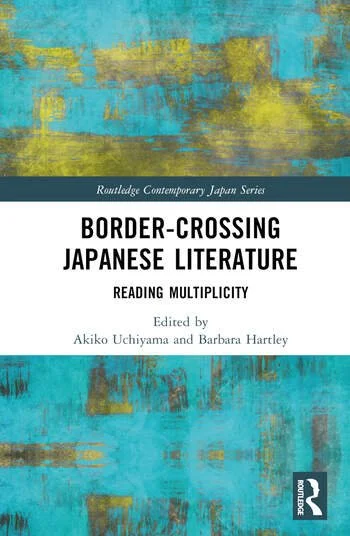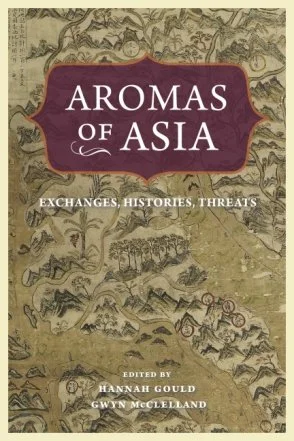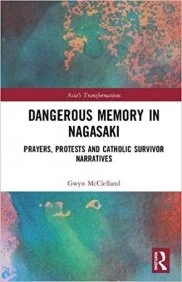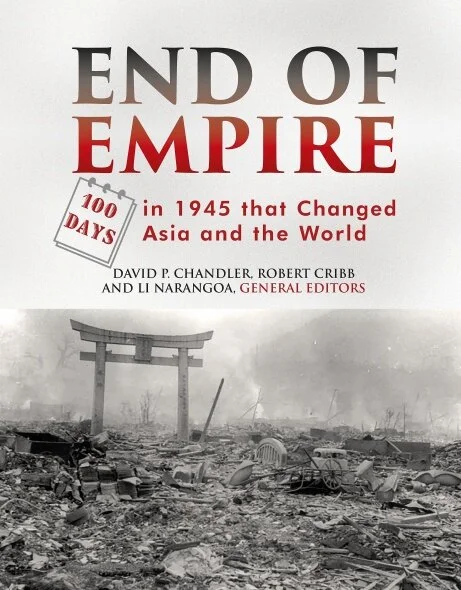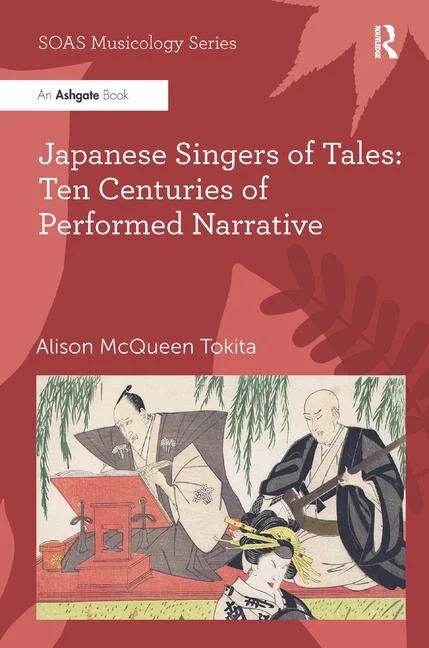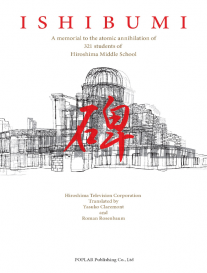
New Book Publications
The Japanese Restaurant: Tasting the New Exotic in Australia
(2023. August) By Iori Hamada (Monash University)
Over the past few decades, Japanese restaurants in Australia have transformed significantly, advancing from mere ‘ethnic enclaves’ to complex entities with cross-cultural and cross-ethnic-racial dimensions. The Japanese Restaurant: Tasting the New Exotic in Australia offers a nuanced exploration of these spaces. Utilising first-hand interviews with restaurant workers and consumers, the book investigates the restaurants’ roles as culinary and cultural nexuses, connecting a diverse community of migrants, locals and tourists.
Structured methodically, the book progresses through key facets of these establishments. Chapter 1 provides foundational context, examining the restaurants as sites for both culinary experiences and meaning-making. Chapter 2 focuses on interviews with restaurant owners and chefs, primarily in Melbourne, offering an insider’s perspective on the industry. Chapter 3 explores the consumer quest for ‘authenticity’, elucidating how this pursuit shapes dining experiences. Chapter 4 critically evaluates the dynamics of translation and ethnicity, challenging popular frameworks, such as ‘hybridisation’ and ‘fusion’. Chapter 5, the conclusion, succinctly encapsulates the book’s key insights and addresses the impact of significant social events, including the 2011 Great Tōhoku Earthquake and Tsunami, and the COVID-19 pandemic on the industry’s authenticity and cultural markers.
Adopting a multidisciplinary lens that incorporates theoretical constructs such as Gilles Deleuze’s ‘fold’ and Judith Butler’s ‘performativity’, the book challenges and supersedes traditional colonialist and essentialist paradigms. It introduces the notion of the ‘new exotic’, thereby facilitating a sophisticated understanding of Japan’s culinary paradigms, the metamorphosing foodscapes of Australia, and the intricate dynamics of an increasingly diverse restaurant industry.
This work stands as a useful resource for scholars, students and anyone keen on understanding the intricacies of cultural exchange and identity construction within a transnational context.
The Japanese Restaurant: Tasting the New Exotic in Australia is available in both paper and e-book formats here.
The Politics of Trauma and Integrity:
Stories of Japanese "Comfort Women"
(2024) By Sachiyo Tsukamoto
Joint Winner of the Carole Pateman Gender and Politics Book Prize 2023
https://auspsa.org.au/prizes-and-awards/carole-pateman-gender-and-politics-book-prize/
The Politics of Trauma and Integrity uses the lenses of gender and trauma to tell the stories of narratives testified by two contrasting Japanese "comfort women" survivors.
Through an innovative interdisciplinary study of the politics of gendered memory and trauma in a historical context, with numerous primary sources for analysis including diaries, interviews, letters and oral testimonies, this book uncovers the life- or- death struggles of Japanese survivors in pursuit of public recognition as the victims of state violence against women. It is set within a gender history of modern Japan, supplemented by feminist activist methodology premised upon political agency that seeks social justice. The author’s analysis draws upon three key concepts: trauma, coherence of the self and integrity. Focusing upon the role of gender and trauma as the nexus between memory construction and identity formation in modern Japan, the author reveals these women’s relentless quest for their recovery and the creation of new identities.
This book provides a better understanding of the victims of sexual violence and encourages readers to listen to the voice of trauma, as well as making a significant contribution to the existing research on the ongoing history of sexual violence against women in Japan, the rest of Asia and beyond. It will be of interest to scholars, researchers, activists and all who are concerned about the issue of women’s human rights. It provides supplementary reading and research material for history and politics courses relating to Japan and East Asia, memory, identity, trauma, gender, war and feminist activism. This book will also be beneficial to victims of sexual violence as well as the counsellors/ psychologists engaging with them.
The Politics of Trauma and Integrity is available in paper and eBook formats here.
The Stripper Goddess of Japan: The Life and Afterlives of Ame no Uzume
(2023) By Shunsuke Tsurumi , Translated by Tomoko Aoyama & Penny Bailey
he Stripper Goddess of Japan: The Life and Afterlives of Ame no Uzume is the first complete English translation of Ame no Uzume den (1991) by one of Japan's most influential post-war intellectuals, Tsurumi Shunsuke (1922-2015). Tsurumi regarded this book as the most important of his vast and varied corpus; in a sense, it is his tour de force, liberally drawing from his profound knowledge and thinking in multiple fields, ranging from classic and contemporary literature to philosophy, sociology, history, anthropology, politics, popular culture and 'marginal' (genkai) art.
Tsurumi's subject, Ame no Uzume, is a minor goddess in Japanese mythology who appears in the ancient texts Kojiki and Nihon shoki. She is famous for her comic-shamanistic dance performance enticing the Sun Goddess Amaterasu out of the Heavenly Cave where she has retreated as a result of her brother's violence. Uzume's half-naked performance is so entertaining to the other deities that Amaterasu ventures outside, thus restoring light to the world. In another episode, Uzume faces a formidable stranger giant, Sarutahiko, at the crossroads of Heaven and Earth, and manages to ease tensions and avoid confrontation. In both instances she reveals her abilities as an open-minded and border-crossing goddess with a democratic, pacifist and mirthful approach to dealing with discomfort and adversity.
Tsurumi identifies Uzume's eight quintessential characteristics and demonstrates how some of these are found in people across a wide range of genres, fields and cultures through time and space. Many of his examples are women, including the founder of kabuki, Izumo no O-Kuni; the legendary post-war striptease performer, Ichijo Sayuri; the founder of the 'dancing religion', Kitamura Sayo; the provocative writer-nun, Setouchi Harumi/Jakucho; and the famously humorous novelist-essayist, Tanabe Seiko. Tsurumi's method, structure and style perfectly match his subject, opening the way for deep consideration into ways in which the many serious global issues facing humankind such as climate change, human rights, and escalating warfare may be resolved or at least diminished.
The Stripper Goddess of Japan is available in paper and eBook formats here.
Border-Crossing Japanese Literature: Reading Multiplicity
(2024) Edited By Akiko Uchiyama, Barbara Hartley
This collection focuses on metaphorical as well as temporal and physical border-crossing in writing from and about Japan.
With a strong consciousness of gender and socio-historic contexts, contributors to the book adopt an intercultural and interdisciplinary approach to examine the writing of authors whose works break free from the confines of hegemonic Japanese literary endeavour. By demonstrating how the texts analysed step outside the`space of ‘Japan’, they accordingly foreground the volatility of textual expression related to that space. The authors discussed include Takahashi Mutsuo and Nagai Kafū, both of whom take literary inspiration from geographical sites outside Japan. Several chapters examine the work of exemplary border-crossing poet, novelist and essayist, Itō Hiromi. There are discussions of the work of Tawada Yōko whose ability to publish in German and Japanese marks her also as a representative writer of border-crossing texts. Two chapters address works by Murakami Haruki who, although clearly affiliating with western cultural form, is rarely discussed in specific border-crossing terms. The chapter on Ainu narratives invokes topics such as translation, indigeneity and myth, while an analysis of Japanese prisoner-of-war narratives notes the language and border-crossing nexus.
A vital collection for scholars and students of Japanese literature.
Border-Crossing Japanese Literature: Reading Multiplicity is available in paper and eBook formats here.
Aromas of Asia: Exchanges, Histories, Threats
(2023) Edited by Hannah Gould and Gwyn McClelland
A uniquely powerful marker of ethnic, gender, and class identities, scent can also overwhelm previously constructed boundaries and transform social-sensory realities within contexts of environmental degradation, pathogen outbreaks, and racial politics. This innovative multidisciplinary volume critically examines olfaction in Asian societies with the goal of unlocking its full potential as an analytical frame and lived phenomenon.
Featuring contributions from international scholars with deep knowledge of the region, this volume conceptualizes Asia and its borders as a dynamic, transnationally connected space of olfactory exchange. Using examples such as trade along the Silk Road; the diffusion of dharmic religious traditions out of South Asia; the waves of invasion, colonization, and forced relocation that shaped the history of the continent; and other “sensory highways” of contact, the contributors break down essentializing olfactory tropes and reveal how scent functions as a category of social and moral boundary-marking and boundary-breaching within, between, and beyond Asian societies. Smell shapes individual, collective, and state-based memory, as well as discourses about heritage and power. As such, it suggests a pervasive and powerful intimacy that contributes to our understanding of the human condition, mobility, and interconnection.
In addition to the editors, the contributors to this volume include Khoo Gaik Cheng, Jean Duruz, Qian Jia, Shivani Kapoor, Adam Liebman, Lorenzo Marinucci, Peter Romaskiewicz, Saki Tanada, Aubrey Tang, and Ruth E. Toulson.
Aromas of Asia: Exchanges, Histories, Threats is available in paper and eBook formats here.
Resolving the Contemporary Tensions of Regional Places: What Japan Can Teach Us
(2021) Anthony S. Rausch
Resolving the Contemporary Tensions of Regional Places: What Japan Can Teach Us offers a unique view of regional society and the future of regional places. The contents take up contemporary and fundamentally universal regional-place tensions—regional relocation, local finance and leadership, local economies together with regionally-specific economic and cultural revitalization, and the potential in higher education and resident volunteerism for regional places—and outline how these tensions are unfolding in regional Japan. The objectives inherent in these themes are increasingly important for all regional areas: drawing urbanites to relocate in regional municipalities, dealing with the instability of regional banking, capitalizing on local leadership potential, addressing tax inequalities across geographically regional economies, responding to the potential loss of cultural history, and understanding the changing dynamics of higher education and local volunteerism in regional society. The responses proposed by the author build on uniquely Japanese approaches: better utilizing an akiya vacant house information bank, activating and connecting regional think tanks with regional banking, articulating the geographic inequality of a hometown tax scheme (furusato nozei) and proposing a way to achieve the objectives of the furusato nozei scheme through cultivation of regional cultural economies, and responding to policy trends in education and increasing individual interest in volunteering by turning these into resources for regional revitalization. The tensions are universal, the solutions reflect Japanese approaches, and the conclusions prompt consideration of the way issues are often framed, and how solutions can emerge when the tensions, and the existing solutions, are reframed.
Resolving the Contemporary Tensions of Regional Places: What Japan Can Teach Us is accessible: chapters are approximately 6,000 words, keeping the book in total to 37,000 words. Anthony Rausch is professor at Hirosaki University (Japan), has lived in and studied rural Japan for over 30 years, holds a PhD in social sciences from Monash University (Australia) and has published extensively on regional Japan. He can be found at < https://www.researchgate.net/profile/Anthony-Rausch> and < https://hirosaki-u.academia.edu/AnthonyRausch>
Resolving the Contemporary Tensions of Regional Places: What Japan Can Teach Us is available in paper and kindle formats here.
Social Networks in Language Learning and Language Teaching
(2021) Edited by Avary Carhill-Poza (University of Massachusetts Boston, USA) and Naomi Kurata (Monash University, Australia)
Sociocultural research has long recognized the necessity of sustained interpersonal interaction for language development; however, less is known about the underlying relationships that promote language acquisition and their relevance for classroom language teaching. Presenting cutting-edge research on social networks and their applications in language teaching and language learning, this book explores the relationships that mediate language learning in and out of classrooms.
Highlighting the complexity of language in multilingual contexts, chapters engage social network analysis to understand the role of instructional practices, socialization, motivation, language status, affinity, mobile communications technology, and language policies in the development of social resources for language learning. Discussing popular language teaching frameworks, such as translanguaging, Social Networks in Language Learning and Language Teaching provides a nuanced accounting of the influences of social context on language learning, exploring classroom applications and pointing the way to a robust research agenda.
人と人のつながりが、言語学習と言語教育にもたらすものを追求した一冊!言語教育に関心のある先生方、教育関係者や保護者、また言語学習、社会言語学、教育学等の分野の研究者の方にお薦めの論文集です。
言語学習・発達において、個人間のインターアクションが果たす役割が重要であることは過去の研究でも主張されていますが、その根底にある人間関係に焦点を当てた研究は多くありません。上記の論文集では、その人間関係が折り重なって築かれたソーシャルネットワークと教室内外の言語学習の関連を3つの部(1.移民の生徒や思春期の若者が学ぶ学校中心のネットワーク、2.外国語を自国で学ぶ大学生のネットワーク、3.海外留学中の高校生と大学生のネットワーク)に分けて、調査・考察しています。
第1章の倉田・Carhill-Poza論文では、ネットワーク分析の理論的な説明とそれを活用した応用言語学の先行研究を論評します。第1部・第4章の折山論文は、豪州シドニー在住の日本にルーツのある思春期の子ども達のネットワークが、継承日本語の発達と維持にどう影響しているかを、彼らの文化的なアイデンティティの構築の関連も含めて考察しています。また第2部の第5・7章の倉田、稲葉論文では、海外(豪州、スウェーデン)で日本語を学ぶ大学生の築くネットワークの特徴や、そのネットワーク内でのインターアクションがどのように彼らの教室内外の日本語学習(モチベーションなど)を促進しているかを調査し、教育現場への示唆も論じます。
第3部の海外留学の場面におけるネットワークについては、第9章の長谷川論文で、日本の短期留学コースに参加したアメリカ人学生がコース中に構築したネットワークの特徴、変化を分析し、彼らが友情を育むことと日本語のみを使うという課題にどう取り組み、それが彼らのネットワークの発達にどう関連しているのか論じています。一方、第10章のDurbidge論文は、日本の高校生が多言語環境に一年間留学した経験を通して、彼らの築いたネットワークがどのようなサポートにつながったのか、そして、現地語や英語を含めた言語能力の向上がネットワークの質にどう影響したかを考察しています。
その他にも、思春期の子ども達や大学生の英語学習者(ESL/EAL)のネットワークを分析した章があります。最後のまとめの論考(第11章Carhill-Poza・倉田論文)では、全章に渡る共通のテーマや課題を取り上げ、調査の結果をどう教育現場へ応用できるかを議論します。また、言語教育・学習におけるソーシャルネットワークの役割についての理論的な枠組みを提唱し、今後必要なネットワーク研究のテーマを提案します。
Dangerous Memory in Nagasaki: Prayers, Protests and Catholic Survivor Narratives
(2019, September) Gwyn McClelland
On 9th August 1945, the US dropped the second atomic bomb on Nagasaki. Of the dead, approximately 8500 were Catholic Christians, representing over sixty percent of the community. In this collective biography, nine Catholic survivors share personal and compelling stories about the aftermath of the bomb and their lives since that day. Examining the Catholic community’s interpretation of the A-bomb, this book not only uses memory to provide a greater understanding of the destruction of the bombing, but also links it to the past experiences of religious persecution, drawing comparisons with the ‘Secret Christian’ groups which survived in the Japanese countryside after the banning of Christianity. Through in-depth interviews, it emerges that the memory of the atomic bomb is viewed through the lens of a community which had experienced suffering and marginalisation for more than 400 years. Furthermore, it argues that their dangerous memory confronts Euro-American-centric narratives of the atomic bombings, whilst also challenging assumptions around a providential bomb. Dangerous Memory in Nagasaki presents the voices of Catholics, many of whom have not spoken of their losses within the framework of their faith before. As such, it will be invaluable to students and scholars of Japanese history, religion and war history.
More info: https://www.taylorfrancis.com/books/9780429266003
Rethinking Japanese Studies: Eurocentrism and the Asia-Pacific Region
(2018) Edited by Kaori Okano, Yoshio Sugimoto
Japanese Studies has provided a fertile space for non-Eurocentric analysis for a number of reasons. It has been embroiled in the long-running internal debate over the so-called Nihonjinron, revolving around the extent to which the effective interpretation of Japanese society and culture requires non-Western, Japan-specific emic concepts and theories. This book takes this question further and explores how we can understand Japanese society and culture by combining Euro-American concepts and theories with those that originate in Japan. Because Japan is the only liberal democracy to have achieved a high level of capitalism outside the Western cultural framework, Japanese Studies has long provided a forum for deliberations about the extent to which the Western conception of modernity is universally applicable. Furthermore, because of Japan’s military, economic and cultural dominance in Asia at different points in the last century, Japanese Studies has had to deal with the issues of Japanocentrism as well as Eurocentrism, a duality requiring complex and nuanced analysis. This book identifies variations amongst Japanese Studies academic communities in the Asia-Pacific and examines the extent to which relatively autonomous scholarship, intellectual approach or theories exist in the region. It also evaluates how studies on Japan in the region contribute to global Japanese Studies and explores their potential for formulating concrete strategies to unsettle Eurocentric dominance of the discipline.
More info: https://www.routledge.com/Rethinking-Japanese-Studies-Eurocentrism-and-the-Asia-Pacific-Region/Okano-Sugimoto/p/book/9781138068506
Discourse, Gender and Shifting Identities in Japan: The Longitudinal Study of Kobe Women’s Ethnographic Interviews 1989-2019, Phase One
(2017) Edited by Claire Maree, Kaori Okano
This book is the first in a unique series drawn from an interdisciplinary, longitudinal project entitled ‘Thirty Years of Talk.’ For 30 years, Okano recorded ethnographic interviews and collected data on the language of working class women in Kobe, Japan. This long-range study sketches the transitions in these women's lives and how their language use, discourse and identities change in specific sociocultural contexts as they shift through different stages of their personal and public lives. It is a ground-breaking, ‘real time’ panel study that follows the same individuals and observes the same phenomena at regular intervals over three decades. In this volume the authors examine the changes in the speech of one particular woman, Kanako, as her social identity shifts from high-school girl to mother and fisherman’s wife, and as her relationship with the interviewer develops. They identify changes in linguistic strategies as she negotiates gender/sexuality norms, stylistic features related to the construction of rapport, the use of discourse markers as she gets older, and the interviewer’s information-seeking strategies.
Podcast about the book: https://arts.unimelb.edu.au/asia-institute/resources/ear-to-asia
More info: https://www.routledge.com/Discourse-Gender-and-Shifting-Identities-in-Japan-The-Longitudinal-Study/Maree-Okano/p/book/9781138104631
Cultural Responses to Occupation Japan: The Performing Body During and After the Cold War
(2016) Broinowski, Adam
Cultural Responses to Occupation in Japan examines how the performing arts, and the performing body specifically, have shaped and been shaped by the political and historical conditions experienced in Japan during the Cold War and post-Cold War periods. This study of original and secondary materials from the fields of theatre, dance, performance art, film and poetry, probes the interrelationship that exists between the body and the nation-state. Important artistic works, such as Ankoku Butoh (dance of darkness) and its subsequent re-interpretation by a leading political performance company Gekidan Kaitaisha (theatre of deconstruction), are analysed using ethnographic, historical and theoretical modes. This approach reveals the nuanced and prolonged effects of military, cultural and political occupation in Japan over a duration of dramatic change. Cultural Responses to Occupation in Japan explores issues of discrimination, marginality, trauma, memory and the mediation of history in a ground-breaking work that will be of great significance to anyone interested in the symbiosis of culture and conflict.
More info: https://www.bloomsbury.com/au/cultural-responses-to-occupation-in-japan-9781780935874/
Central Banks and Gold: How Tokyo, London, and New York Shaped the Modern World
(2016) Bytheway, Simon James and Mark Metzler
In recent decades, Tokyo, London, and New York have been the sites of credit bubbles of historically unprecedented magnitude. Central bankers have enjoyed almost unparalleled power and autonomy. They have cooperated to construct and preserve towering structures of debt, reshaping relations of power and ownership around the world. In Central Banks and Gold, Simon James Bytheway and Mark Metzler explore how this financialized form of globalism took shape a century ago, when Tokyo joined London and New York as a major financial center.As revealed here for the first time, close cooperation between central banks began along an unexpected axis, between London and Tokyo, around the year 1900, with the Bank of England's secret use of large Bank of Japan funds to intervene in the London markets. Central-bank cooperation became multilateral during World War I—the moment when Japan first emerged as a creditor country. In 1919 and 1920, as Japan, Great Britain, and the United States adopted deflation policies, the results of cooperation were realized in the world's first globally coordinated program of monetary policy. It was also in 1920 that Wall Street bankers moved to establish closer ties with Tokyo. Bytheway and Metzler tell the story of how the first age of central-bank power and pride ended in the disaster of the Great Depression, when a rush for gold brought the system crashing down. In all of this, we see also the quiet but surprisingly central place of Japan. We see it again today, in the way that Japan has unwillingly led the world into a new age of post-bubble economics.
More info: https://www.degruyter.com/cornellup/view/title/528449
End of Empire: 100 Days in 1945 that Changed Asia and the World
(2016) Edited by Chandler, David, Robert Cribb and Li Narangoa
Aiming to balance the focus on European events in global public discussions and reminiscences of World War II, End of Empire focuses on a brief, 100-day period at the end of the war across a broad sweep of eastern Asia – a time when the Indonesian and Vietnamese revolutions were born, the fragile wartime truce between Communists and Nationalists in China began to fray, and the first steps were made in Japan towards a new democratic order. Following a chronological order, the volume combines daily events with commentary, photographs, maps and personal accounts. More importantly, it is part of a radical, multi-faceted project to commemorate the period not just in print but also on screen and in ‘real-time broadcasts’ published day by day. Here, perhaps, is the form of scholarly publishing and learning of the future but without abandoning traditional standards.
More info: https://www.ubcpress.ca/end-of-empire
Bridging Australia and Japan: The Writings of David Sissons, Historian and Political Scientist
(2016) Stockwin, Arthur and Keiko Tamura
This book represents volume one of the writings of David Sissons, who for most of his career pioneered research on the history of relations between Australia and Japan. Much of what he wrote remained unpublished at the time of his death in 2006, and so the editors have included a selection of his hitherto unpublished work along with some of his published writings. Breaking Japanese Diplomatic Codes, edited by Desmond Ball and Keiko Tamura, was published in 2013 and forms a part of the series that reproduces many of Sissons’ writings. In the current volume, the topics covered are wide. They range from contacts between the two countries as far back as the early 19th century, Japanese pearl divers in northern Australia, Japanese prostitutes in Australia, the wool trade, the notorious ‘trade diversion episode’ of 1936, and a study of the Japan historian James Murdoch.
Sissons was an extraordinarily meticulous researcher, leaving no stone unturned in his search for accuracy and completeness of understanding, and should be considered one of Australia’s major historians. His writings deal with not only diplomatic negotiations and decision-making, but also the lives of ordinary and often nameless people and their engagements with their host society. His warm humanity in recording ordinary people’s lives as well as his balanced examination of historical incidents and issues from both Australian and Japanese perspectives are a hallmark of his scholarship.
More info: https://press.anu.edu.au/publications/series/asian-studies-series/bridging-australia-and-japan-volume-1
Japanese Singers of Tales: Ten Centuries of Performed Narrative
(2015) Alison McQueen Tokita
Alison McQueen Tokita presents a series of case studies that demonstrate the persistence of Japanese sung narratives in a multiplicity of genres over ten centuries, including the way they flourished and declined, together with factors contributing to development and change in narrative performance. Performed narratives are examples of a shared cultural heritage, which in the past have given people a sense of belonging to a community. Narratives that were continually re-told and recycled in different versions and formats over a long period of time served to build people's sense of a common identity over space (the geographical extent of 'Japan') and time (the enduring power of many specific narratives such as The Tale of the Heike). Much scholarly attention has focused on Japanese pre-modern literature and drama, but the tradition of oral narrative has barely been touched. Tokita argues that it is possible to identify a continuous tradition of performed narrative in Japan from the tenth to the twentieth centuries. The elements of variation and change relate to the move away from oral narrative to text-based performance, and from a simple narrative situation with one performer to complex theatrical narratives with dancers, singers and other musicians. The resulting complexity led to the pre-eminence of the musical aspects in some cases, and of dramatic or dance aspects in others. Tokita includes substantial musical analysis and exploration of theoretical issues, as well as documentation of important performance traditions, all of which are extant.
More info: https://www.routledge.com/Japanese-Singers-of-Tales-Ten-Centuries-of-Performed-Narrative/Tokita/p/book/9780754653790
Ishibumi: A memorial to the atomic annihilation of 321 Students of Hiroshima Middle School
(2016) Hiroshima Television Corporation (Ed.)
Translated by Yasuko Claremont and Roman Rosenbaum
6 August 1945
We want to let people all over the world know what happened in Hiroshima on
that day. The story of the annihilation by the atom bomb of 321 first-year students and their four teachers from Hiroshima Nitchū. For over 45 years Ishibumi has been read in Japan. Now it’s in English for the first time!
人とつながり、世界とつながる日本語教育
トムソン木下千尋(編)
ことばは、ひとりの個人が学習し、その結果、利用するものではなく、ことばは、人と人とをつなぐもので、ことばの学習も人と人、人と社会との関わりの中で生まれるものです。日本語教育の現場も、学習者と学習者、学習者と学習支援者、そしてその周辺の社会をつなぐ場であるべきでしょう。また、一つの日本語教育の現場がそれだけで完結するのではなく、他の現場、他の分野とつながり、世界のコミュニティの中で存在し、発信し、発展していって欲しいと思います。そして、このようなビジョンが、日本語教育のさらなる新しい潮流を作っていくのではないでしょうか。(「はじめに」より)
The Bonin Islanders, 1830 to the Present: Narrating Japanese Nationality
(2016) David Chapman
This book is a collection of interwoven historical narratives that present an intriguing and little known account of the Ogasawara (Bonin) archipelago and its inhabitants. The narratives begin in the seventeenth century and weave their way through various events connected to the ambitions, hopes and machinations of individuals, communities, and nations. At the center of these narratives are the Bonin Islanders, originally an eclectic mix of Pacific Islanders, Americans, British, French, German, Portuguese, Italian, and African settlers that first landed on the islands in 1830. The islands were British sovereign territory from 1827 to 1876, when the Japanese asserted possession of the islands based on a seventeenth century expedition and a myth of a samurai discoverer. As part of gaining sovereign control, the Japanese government made all island inhabitants register as Japanese subjects of the national family register. The islanders were not literate in Japanese and had little experience of Japanese culture and limited knowledge of Japanese society, but by 1881 all were forced or coerced into becoming Japanese subjects. By the 1940s the islands were embroiled in the Pacific War. All inhabitants were evacuated to the Japanese mainland until 1946 when only the descendants of the original settlers were allowed to return. In the postwar period the islands fell under U.S. Navy administration until they were reverted to full Japanese sovereignty in 1968. Many descendants of these original settlers still live on the islands with family names such as Washington, Gonzales, Gilley, Savory, and Webb. This book explores the social and cultural history of these islands and its inhabitants and provides a critical approach to understanding the many complex narratives that make up the Bonin story.
More info: https://rowman.com/isbn/9781498516631/the-bonin-islanders-1830-to-the-present-narrating-japanese-nationality
The Social Sciences in the Asian Century
(2015) Carol Johnson, Vera Mackie and Tessa Morris-Suzuki (eds)
In this collection of essays, we reflect on what it means to practise the social sciences in the twenty-first century. The book brings together leading social scientists from the Asia-Pacific region. We argue for the benefit of dialogue between the diverse theories and methods of social sciences in the region, the role of the social sciences in addressing real-world problems, the need to transcend national boundaries in addressing regional problems, and the challenges for an increasingly globalised higher education sector in the twenty-first century. The chapters are a combination of theoretical reflections and locally focused case studies of processes that are embedded in global dynamics and the changing geopolitics of knowledge. In an increasingly connected world, these reflections will be of global relevance.
More info: https://press.anu.edu.au/publications/social-sciences-asian-century#pdf
Nonformal Education and Civil Society in Japan
(2015) Kaori H. Okano
Nonformal Education and Civil Society in Japan critically examines an aspect of education that has received little attention to date: intentional teaching and learning activities that occur outside formal schooling.
In the last two decades nonformal education has rapidly increased in extent and significance. This is because individual needs for education have become so diverse and rapidly changing that formal education alone is unable to satisfy them. Increasingly diverse demands on education resulted from a combination of transnational migration, heightened human rights awareness, the aging population, and competition in the globalised labour market. Some in the private sector saw this situation as a business opportunity. Others in the civil society volunteered to assist the vulnerable. The rise in nonformal education has also been facilitated by national policy developments since the 1990s.
More info: https://www.routledge.com/Nonformal-Education-and-Civil-Society-in-Japan/Okano/p/book/9780415745307
Women and Politics in Contemporary Japan
(2015) Emma Dalton
This book looks at the gendering of the political system in Japan and the effects of that system on gender equality in national-level politics specifically and wider society more generally. It examines the approach taken by the long-ruling Liberal Democratic Party (LDP) to issues of gender equality in Japan, and the repercussions of that approach on women’s political experiences and representation. This book covers a range of themes including the role of the LDP and other major political parties in constructing the modern Japanese political system, the under-representation of women in Japanese politics, women’s experiences in party politics and the gendering of government policies. Using in-depth interviews with women members of the national Diet, the book sheds light on how political women negotiate the male-dominated world of Japanese politics.
More info: https://www.routledge.com/Women-and-Politics-in-Contemporary-Japan/Dalton/p/book/9780415827386
Japanese Fashion Cultures: Dress and Gender in Contemporary Japan
(2015) Masafumi Monden
From Rococo to Edwardian fashions, Japanese street style has reinvented many western dress styles, reinterpreting and altering their meanings and messages in a different cultural and historical context. This wide ranging and original study reveals the complex exchange of styles and what they represent in Japan and beyond, contesting common perceptions of gender in Japanese dress and the notion that non-western fashions simply imitate western styles.
Through case studies focussing on fashion image consumption in style tribes such as Kamikaze Girls, Lolita, Edwardian, Ivy Style, Victorian, Romantic and Kawaii, this ground-breaking book investigates the complexities of dress and gender and demonstrates the flexible nature of contemporary fashion and style exchange in a global context. Japanese Fashion Cultures will appeal to students and scholars of fashion, cultural studies, gender studies, media studies and related fields.
More info: https://www.bloomsbury.com/us/japanese-fashion-cultures-9781472536211/



